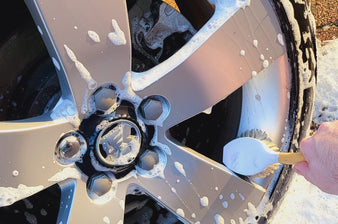Celebrating Earth Month and Rethinking Plastic
As we prepare for Earth Day on April 22, we join many around the world in the celebration of Earth Month. April is a perfect time to see the wonders of this world. Spring flowers begin to bloom, many are reintroduced to time spent outdoors, and cheery songbirds greet us in the morning. It’s also a good time for us at Full Circle to consider what we’re doing to protect our planet. One aspect of this is how we’re rethinking plastic.
How is Full Circle Plastic Neutral?
At Full Circle, we harness sustainable design to help people make smarter decisions for their homes, families, wallets—and our planet. Before our products make it into homes around the world, they’re produced responsibly, with as little plastic as possible.
To compensate for the plastic we do use, Full Circle is Plastic Neutral.
What is plastic neutral? Essentially, it means that for every ounce of plastic used in Full Circle products, an equivalent amount is recovered and responsibly recycled. We’ve partnered with international organization Plastic Bank® to make this possible.
Plastic Diverted from Ecosystems… and So Much More
The equivalent of a garbage truck’s load of plastic makes its way into our oceans. Every. Single. Minute.
Plastic waste—especially how it ends up in ecosystems—is a massive problem. And it doesn't appear to be slowing down anytime soon. The material plays an important role in our world, but until we find a better way to dispose of and reuse plastic, the problem will grow. It’s expected that there will be more plastic than fish in our oceans by 2050.
This is where plastic recovery organizations come in. While Full Circle’s long-term commitment to a plastic-polluted planet entails limiting our consumption, we’re currently offsetting what we use by supporting Plastic Bank® and their efforts. Here’s how it works:
We’re Constantly Striving to Do Better (You Can, Too!)
There’s more good news. For a while now, we’ve been using GRS-certified recycled plastic in whatever we can. We’ve also been doing away with plastic in any situation where it’s not absolutely necessary.
This means that we’re in the process of a packaging rebrand. We’re saying “goodbye” to plastic twisty ties, zip ties, and lamination. While we’re on our way to 100% plastic-free packaging, you may still see some packaging with plastic components. We want to be completely rid of our current products before launching everything in new packaging. We don’t want to create any waste, after all!
After we tackle packaging, we’ll move onto virgin plastics. By 2025, we’ll be using 100% recycled plastic instead.
We know the sky’s the limit with where we can go with sustainability. We also know that the ocean is no place for plastic waste. We’re excited about how we can improve with both, and encourage you to celebrate Earth Month by using Plastic Bank’s plastic footprint calculator to make improvements where you can.




